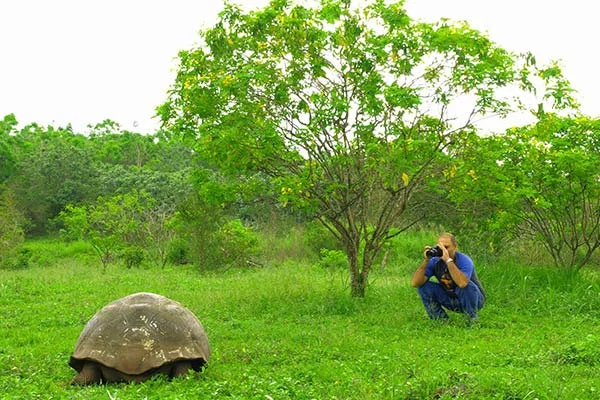
Galapagos Island Vegetation Zones
Owing to the extraordinary nature of the Galapagos archipelago, the islands boast several vegetation zones, which all show a wide variation from one another and from the landscape on mainland Ecuador. The vegetation zones occur because of the archipelago, different flora and fauna are found at different elevations and at different distances from the coast. Each vegetation zone shows signs of community organization between the flora and fauna, which has made the islands an area of special interest to biologists, geographers, zoologists, and horticulturalists, even more so considering that over 30% of Galapagos flora are found only on the islands and nowhere else. When scientists make a map of the Galapagos Islands, they highlight three main vegetation zones in the archipelago: the arid zone, the humid highlands, and the coastal zone.
Galapagos Plant life – vegetation zones mapping
Arid Zone
The arid zone covers the largest area across the islands and often surprises tourists, who were expecting more lush forest. The plants here are highly adapted to the environment, and so can survive in drought-like conditions that plants from the coastal and humid zones could not survive in. The flora commonly found here are leafless shrubs, flowering only during the short rainy season, and cacti, but as the arid zone boasts the largest numbers of flora, there’s plenty to interest even the most enthusiastic biologists.
Humid highland Zones
The humid highland zones can only be found on the larger islands with higher elevation, and because most of the Galapagos Islands don’t feature elevation higher than the arid zone, the humid zones are a rarer sight as they only located above the arid zones. The lush, leafy and green humid zones are populated by large numbers of Scalesia trees, which form dense forest areas in which mosses and smaller plants can be found, using the trees as a habitat.
Coastal Zone
The coastal zone, occupying a narrow area by the shoreline, is notable for its many plant species, which are tolerant to the highly salty conditions caused by the sea. Mangrove trees are extremely common in this zone and play a crucial part in the breeding of many bird species, including frigate birds and pelicans, as they choose the trees as the location to breed in. The shade offered by the trees also attracts sea lions and iguanas, for which shade is necessary to prevent deadly overheating. Many of the plants found here have adapted to sea dispersal, owing to their proximity to the sea.
Visit Galapagos on a tour and discover the different plant species that have adapted and populated the islands allowing the unique wildlife to strive in otherwise harsh conditions.



